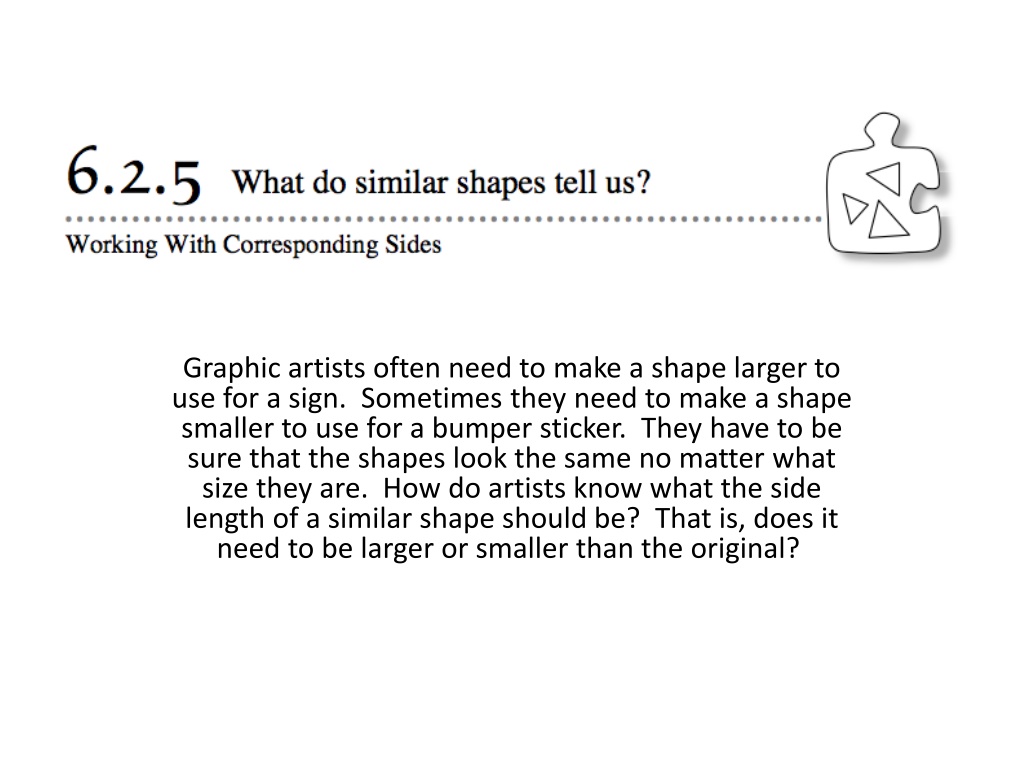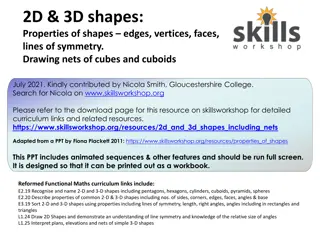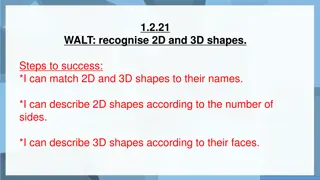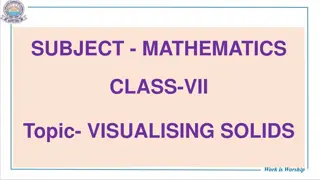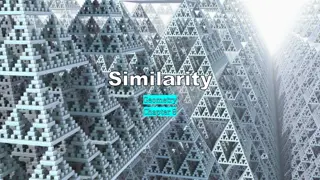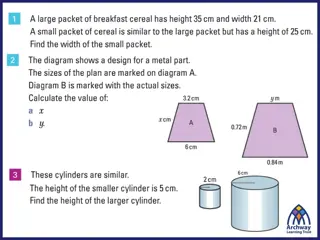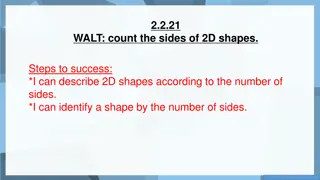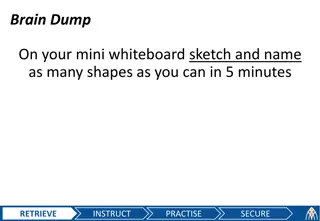Understanding Scale Factors and Similar Shapes in Graphic Design
Graphic artists often need to resize shapes for different purposes while ensuring they maintain their original proportions. This involves determining the scale factor between similar shapes, understanding how to find the scale factor using corresponding sides, and dealing with scenarios where sides are not direct multiples of each other. By exploring strategies for finding scale factors and analyzing the equality of ratios in similar shapes, artists can effectively resize shapes for various design applications.
Download Presentation

Please find below an Image/Link to download the presentation.
The content on the website is provided AS IS for your information and personal use only. It may not be sold, licensed, or shared on other websites without obtaining consent from the author. Download presentation by click this link. If you encounter any issues during the download, it is possible that the publisher has removed the file from their server.
E N D
Presentation Transcript
Graphic artists often need to make a shape larger to use for a sign. Sometimes they need to make a shape smaller to use for a bumper sticker. They have to be sure that the shapes look the same no matter what size they are. How do artists know what the side length of a similar shape should be? That is, does it need to be larger or smaller than the original?
6-86. With your team, find the scale factor between each pair of similar shapes. That is, what are the sides of each original shape multiplied by to get the new shape?
6-87. It may have been easier to recognize the scale factor between the two shapes in part (a) of problem 6-86 than it was to determine the scale factor between the two shapes in part (b). When sides are not even multiples of each other (like the sides labeled 4 in. and 5 in. in part (b), it is useful to have another strategy for finding the scale factor.
Your task: Work with your team to describe a strategy for finding the scale factor between any two shapes. Refer to the questions below to begin your discussion. How can we use pairs of corresponding sides to write the scale factor? Will the scale factor between the shapes be more or less than 1? Does it matter which pair of corresponding sides we use?
6-88. A study team was working together to find the scale factor for the two similar triangles at right. Claudia set up the ratio to find the scale factor. Issac set up the ratio to find the scale factor. Paula set up the ratio to find the scale factor. a) What did the students do differently when they found their scale factors? b) Do the triangles have more than one scale factor? If not, show how they are the same. c) Why does it make sense that the ratios are equal?
6-89. Alex was working with the two triangles from problem 6-86, but he now has a few more pieces of information about the sides. He has represented the new information and his scale factor in the diagram reprinted at right. Sketch his diagram on your own paper. a) Use the scale factor to find the length of the side labeled x. Show your work. Since Alex multiplied the side lengths of triangle G to get triangle H, he needs to undo the enlargement to find the side labeled y. What math operation would he use to undo the enlargement? Write an expression and be prepared to explain your reasoning. If you are able, simplify the expression to find y. If triangle H had been the original triangle and triangle G had been the new triangle, how would the scale factor change? What would the new scale factor be? Explain. b) c)
6-90. For the pairs of similar shapes below, find the lengths of the missing sides. Be sure to show your calculation. You can choose which shape is new and which is original in each pair. Assume the shapes are all drawn to scale. The shapes in part (b) are parallelograms and the shapes in part (d) are trapezoids.
6-91. Additional Challenge: On graph paper, copy the figure shown at right. a) Find the area of the shape. b) Enlarge the shape by a scale factor of 2, and draw the new shape. Find the area.
